Imagine dedicating over a decade to global public health—only to discover that securing real-world impact often demands more than a stack of research papers.
That’s precisely where Dr. Claire Snell-Rood found herself: wrestling with the rigid structures of academia despite her passion for community-focused, hands-on work. She’d witnessed families in rural Appalachia struggle with mental health care. She collaborated with local partners in India to tackle entrenched social issues—yet found too many of her insights locked behind grant approvals and academic silos. Eager to see ideas come to life more quickly, Claire took the leap into UX and product research.
When I sat down with Claire, I expected to hear a story about career transition. What I didn’t expect was how deeply her story would resonate with my own struggles in navigating change.
In this article, you’ll discover key insights from our conversation—whether you're considering a career pivot yourself or simply curious about how research can shape product strategy, her journey offers a powerful roadmap for making meaningful shifts without losing sight of your core values.
Early Influences: When Curiosity Outgrew the Classroom
Claire’s interest in human complexity took root long before academia. In high school, she stumbled upon an anthropology book exploring why certain impoverished communities in Brazil exhibited seemingly “unattached” parenting. Rather than judging these mothers, the anthropologist questioned the social conditions fueling their reactions. This fresh way of viewing society deeply resonated with Claire. It was never just about labeling behavior; it was about understanding the context that creates it.
By the time she entered college, she was fully invested in anthropology’s power to uncover the “why” behind human actions. From hair salons to rural villages, she saw every environment as a microcosm of more significant social forces. Yet as her fieldwork expanded—encompassing global public health challenges, mental health policy, and university-level teaching—Claire encountered a persistent hurdle: limited avenues to turn her insights into tangible change. Despite collaborating with nonprofits and community stakeholders, the tight constraints of academic research often prevented her findings from becoming widespread, impactful solutions.
Actionable Insight: Welcome the Unexpected “Spark”
Next time something sparks your curiosity—a book, a conversation, an unexpected compliment—write it down in a “Pivot Journal.” After a month, review your notes and look for patterns. What topics keep showing up? Those might be pointing you toward your next career move.
The Great Pivot: Trading Grant Proposals for Product Prototypes
Despite her love for fieldwork, Claire found academia increasingly stifling. Writing grant after grant to keep her projects afloat, she felt a gnawing sense that her research—though valuable—was not shaping real-world outcomes quickly enough. Eventually, she decided to explore a new frontier: technology.
Her gateway turned out to be a design and research agency called Forge. A friend introduced her to a co-founder who was buried in client projects but was short on researchers. Claire jumped in, bringing her excellent skills in qualitative interviews and ethnographic observation—yet also realizing she’d need to reframe her approach for corporate timelines and deliverables. One of her first adjustments was learning to communicate findings visually and succinctly, a contrast from the lengthy academic papers she was used to.
For Claire, the agency environment was both exhilarating and daunting. She worked with diverse clients—from contractor platforms to government programs—exposing her to the broad spectrum of “real-world problems” tech teams strive to solve. Each day felt like a crash course in product lifecycles and design priorities. The experience also highlighted cultural gaps; in academia, a robust literature review might precede any formal conclusions, but in industry, stakeholders often want key insights yesterday.
Actionable Insight: Adapt Your Deep Expertise to Fast-Moving Milestones
Academia values depth; industry values speed. If you’re used to long-form analysis, practice distilling your insights into formats that decision-makers can act on quickly. Take a recent report or research project and turn it into a one-page summary, a five-slide deck, or even a single sharp takeaway. The more effortlessly you can translate complex ideas into clear, actionable insights, the more impact you’ll have around time-strapped stakeholders.
Finding a Long-Term Home: Joining Rippling and Going In-House
This is something I’ve heard from so many professionals making the jump into tech—at first, you crave variety, but eventually, you want to go deeper. Claire felt the same pull, which led her to Rippling, an HR and IT platform known for rapid innovation. Moving in-house forced her to think far beyond discrete projects. Now, she had to grasp how various modules—payroll, employee management, reporting—fit together under one corporate umbrella. Each product decision impacted multiple user types, from C-suite executives to frontline managers.
Navigating this new environment felt akin to studying a “field site.” Claire mapped out who influenced decisions, how teams interacted, and where her research would yield maximum impact. Going in-house required even sharper organizational awareness. Technical jargon abounded, release cycles moved fast, and cross-functional alignment could feel like a marathon. But the payoff was tangible: instead of handing research off and hoping for the best, she watched her insights shape internal roadmaps and steer product design over time.
Actionable Insight: Cultivate a “Company as Field Site” Mindset
Think of your first month in a new role as fieldwork. Pay attention to who actually makes decisions—not just by title, but by influence. Notice which teams hold the most valuable insights and who people turn to for unofficial advice. Watch how ideas move through the company—who needs to sign off, who gets things done quietly, and where the real momentum happens. The faster you decode these hidden dynamics, the more effectively you can navigate and contribute.
Tech Culture Through an Anthropologist’s Lens
At one point in our conversation, Claire laughed and said, “It’s funny—engineers assume everyone sits at a desk all day. But what if you’re a retail worker? What if you’re on a factory floor?”
That’s when it hit me: The biggest blind spots in tech don’t come from bad intentions—they come from bad assumptions.
Well-educated, computer-savvy employees tend to assume all users work in a similar environment, constantly tethered to their laptops. Yet Rippling’s software is also used by employees in retail, manufacturing, and other sectors who don’t share Silicon Valley’s daily rhythms. Claire highlights the danger: a solution that looks perfect in a product demo might fail spectacularly on a busy factory floor.
In her view, this disconnect isn’t simply a “technical” oversight—it’s a social phenomenon. It reflects whose voices are present in design meetings and which assumptions get baked into the product. By employing anthropological techniques like open-ended questioning and observational studies, Claire helps teams see past their biases. Sometimes, this means gently challenging engineers with “dumb questions” like, “Why do we assume they can even open a laptop during working hours?” Instead of a weakness, these clarifying questions often spark breakthroughs.
Actionable Insight: Challenge Groupthink with Open-Ended Questions
If something seems off, ask. The simplest “Why do we do it this way?” can expose valuable assumptions and steer a product toward real user needs.
The “Platform” Adventure: Finding People in the Weeds of Data
Platform roles might seem dry—often, they’re about building backend systems, setting up data structures, or integrating permissions. Yet Claire sees it differently. “Platform” is essentially the skeleton supporting every other feature in a product suite, and that skeleton touches a broad range of human concerns. For instance, setting up user permissions is not just a technical detail; it’s about trust, accountability, and the consequences of getting it wrong. If an HR manager can’t guarantee data privacy, someone’s job could be on the line.
In this sense, the “platform” is as human as a front-end feature. Claire’s research unearths hidden patterns in how teams use data. She observes how finance departments define “sensitive” information differently than HR or operations might. She notices which metrics matter most to different roles, revealing unspoken hierarchies within a single organization. By framing these details as social puzzles rather than purely technical ones, Claire amplifies the relevance and urgency of platform decisions, encouraging her colleagues to address real-world stakes—like job security, legal compliance, and interpersonal trust.
Actionable Insight: Look for the Human Angle in Technical Spaces
Even if you’re working on back-end or data-heavy features, ask what’s genuinely at stake for people. Identifying emotional or career-related risks helps build empathy into the product design.
Bridging Research & Design: Lessons for Early-Career Professionals
When she first arrived at Forge, Claire admits she could have engaged more deeply with designers—understanding how they draft user flows, iterate on wireframes, and weigh aesthetic decisions against usability. She describes her initial hesitation as a “fear of looking ignorant.” Over time, however, she realized that immersing herself in design critiques and team brainstorming sessions sharpened her approach. By viewing design as a structured methodology, she discovered more ways to add value as a researcher.
For those early in their careers, Claire’s experiences underscore the importance of absorbing adjacent disciplines. Whether you’re a junior researcher figuring out how to analyze data for a product roadmap or a new designer learning to interpret user interviews, an empathetic blend of skill sets can accelerate outcomes and help you stand out in a competitive field.
Actionable Insight: Immerse Yourself in Cross-Functional Collaboration
Great work doesn’t happen in silos. If you’re a researcher, spend time in design critiques to see how insights shape user flows. If you’re a designer, shadow a researcher during interviews to understand how real user needs emerge. The more you embed yourself in other disciplines—learning their language, tools, and thought processes—the faster ideas turn into impactful decisions.
Overcoming Self-Doubt: Facing the “Imposter” Voice
No major pivot is free of self-doubt. Coming from academia, Claire grappled with imposter syndrome—wondering if her scholarly background truly fit the cut-and-thrust of tech. She found solutions in straightforward yet powerful strategies. First, she kept a “mental check-in” list, jotting down each moment of anxiety or indecision, then revisiting those notes when she felt clearer. Second, she relied on an “accountability buddy,” someone who understood her aspirations and could affirm the incremental milestones she was achieving.
By openly acknowledging the fear of “not measuring up,” Claire freed herself to focus on learning. Over time, her broad experience in anthropological research, community partnerships, and academic writing proved invaluable. Product teams needed a professional who could rapidly uncover user motivations, highlight deeper cultural context, and present those insights concisely and persuasively—and that was Claire’s specialty.
Actionable Insight: Turn Self-Doubt into a Growth Tool
Self-doubt isn’t a stop sign—it’s a signal. Pay attention to when it shows up and why. Is it a lack of experience? A missing skill? Instead of letting it hold you back, treat it like a personal growth audit. Keep a simple list of moments when you felt unsure, then look for patterns. Where do you need more practice, mentoring, or exposure? What once felt like a weakness can quickly become your next strength.
Conclusion: Merging Intellect and Impact
Claire’s story proves that a specialized academic path can evolve into a dynamic industry career where intellectual rigor meets fast-paced product strategy. Her drive to ask “why?” and her willingness to step into uncharted territory have allowed her to shape technology that resonates with genuinely diverse user realities. Whether clarifying permission structures or championing front-line workers’ needs, Claire applies her anthropological lens to keep tech solutions grounded in everyday life.
If you found Dr. Claire Snell-Rood’s journey insightful, I invite you to explore our entire conversation. You’ll discover more practical tips on networking, translating research for executive audiences, and navigating the emotional complexities of career change.
So here’s a question: Have you ever made a career pivot—big or small? What was the moment that made you realize you had to change? Hit reply and tell me—I read every response! If her experiences with forging a new career identity inspire you, consider sharing your thoughts or next steps in the comments—or reach out with your own stories of pivoting from one discipline to another.
Until next time,
Chris ✌️


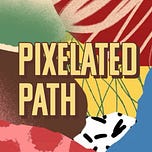





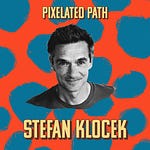

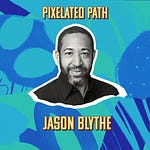
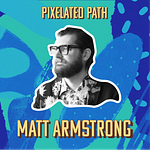

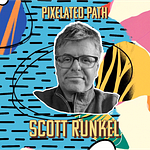
Share this post